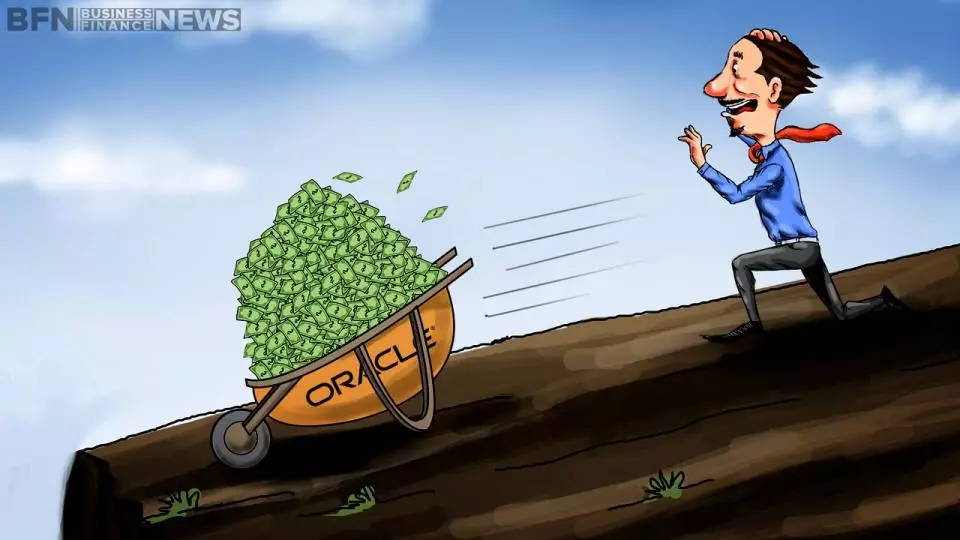Oracle Corporation: After Such An Outlook, Where Can It Go?
Can the company’s substantial growth in cloud-computing be big enough to drive it forward?
Oracle Corporation (NYSE:ORCL) announced the second-quarter earnings results for fiscal 2016 (2QFY16) after the market closed last night. The enterprise disclosed dry revenues for the recent quarter. The strength of dollar was one factor that negatively impacted the revenue. The company reported top-line revenue of $9 billion, down 6% year-over-year (YoY) in dollars.
Earnings per share (EPS) came in at $0.63, beating the Street’s expectations of $0.60. This was due to improved cost controls and the on-going share buyback program.
During the event, investors were keen to gather information about the company’s cloud-computing division. The division displayed a promising picture of the transition from its core software-licensing business to a cloud-centric business model. Cloud revenues totaled $649 billion showing a growth of 31% YoY in constant currency terms. Taking into account the FX headwinds, 26% growth in US dollars was recorded.
Oracle’s focused areas of software as a service (SaaS) and platform as a service (PaaS) together brought in $484 million, up 34% YoY in dollar terms and 39% in constant currency terms. Cloud infrastructure as a service (IaaS) revenues were $165 million, up 7% YoY in U.S. dollars and up 11% in constant currency.

While cloud revenues impressed the stockholders, guidance for the upcoming quarters was disappointing. Oracle expects 3Q EPS within $0.60–0.63 as compared to a consensus of $0.65. For 3Q, SaaS and PaaS revenue is expected to grow in the range of 49–53% YoY in constant currency terms. IaaS revenue growth is calculated to fall within 3–7%YoY.
Furthermore, even the fourth-quarter guidance did not do much to push the company going forward. 4Q EPS is likely to fall within $0.80–0.83 in comparison to consensus estimated $0.82. SaaS and PaaS are anticipated to grow 55–59% YoY in constant currency terms with gross margins expected to be around 55–60% YoY along with IaaS growth to be 1–5% YoY.
Building up to the earnings release, the stock has gained 5% from the start of the week. Yesterday’s trading alone led to a 2% increase in the stock price. However, after the earnings report, investors were not pleased with the numbers going forward. The stock is trading in red at $37.17 down 4.47% as of 11:15 am EST.
Despite growth in the cloud business, revenues from this stream only accounted for 5% of the overall figure. Looking at its double-digit growth numbers, cloud is no doubt performing really well. Hence, investors are careful on bidding a substantial amount of money on Oracle stock.
We have studied investments from Netflix, new contracts signed by Orbital, SolarCity earnings report and their negotiation with Tesla for the acquisition of the Powerball battery, the problems that ARCH coal is facing, how IBM is investing in the treatment of the Zika virus, how Moon Express is planning to mine minerals in the moon, and how Citigroup is engaged in commodity trading.
We follow a lot Tesla here, from the fundamental analysis and from the technical as well. See how the Chevy Bolt and the Tesla 3 are dimensioning the evolution of the price of this shares and how this could affect technical analysis, and how the Autopilot functionality is working: the evolution of the Autopilot software has always influenced the prices of their stocks. Tesla Model S 70D is considered the “car of the century”, not by us of course, but we are interested to see how these awards affect the evolution of the stocks. Tesla and other companies signed an agreement so that autobraking became the standard in 2022. A trend in the automobile industry started by Mercedes Benz and Tesla, is having a platform to sell pre-owned vehicles: now General Motors is joining that trend as well.
We have studies how the stock slump of GoPro should be considered not only from the view of technical analysis. Also, check the functionality from Facebook, the “login approval” and if it really protects users or other interests. The reports from Volkswagen about their very low injury claims, how now other companies in China can use the name “IPhone” apart from Apple. We continue in China to learn about the Marketplace Alliance Program from Alibaba, and the joint investment in CloudFlare from Google Inc, Microsoft Corporation, Qualcomm, and Baidu.
About Google, a company we follow a lot here, I want to see how they have entered in the batteries market and how this will affect their current projects and the evolution of the stocks. Interesting are the Chrome updates to decrease CPU usage.
We analyze the effects of the position of Disney in the dispute between Netflix and Time Warner, so we can understand how Disney is shifting its business after selling its stake in Fusion.
We discuss briefly how Oracle adressed the changes in the cloud-computing industry, why Morgan Stanley is optimistic after the pandemic and the Brexit, the divestment in Dell regarding Perot Systems, and the effects of the huge minimum wage rise in Costco. Chipotle is cutting the executive compensation, the issues that BP is facing, what happens with Macy´s earnings and how fundamental analysis can be done in those cases. About Apple, we analyze the effect of the launch of this product Apple Watch where sales performed very irregularly.

I am David, economist, originally from Britain, and studied in Germany and Canada. I am now living in the United States. I have a house in Ontario, but I actually never go. I wrote some books about sovereign debt, and mortgage loans. I am currently retired and dedicate most of my time to fishing. There were many topics in personal finances that have currently changed and other that I have never published before. So now in Business Finance, I found the opportunity to do so. Please let me know in the comments section which are your thoughts. Thank you and have a happy reading.



